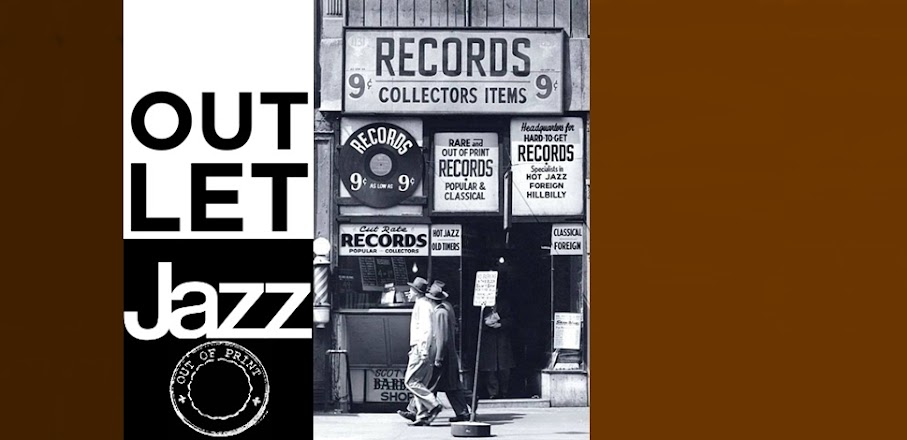Captivated by music during his early youth, composer, arranger and conductor Russ Garcia began writing prior to the age of ten and at eleven submitted an arrangement of "Stardust" to be performed by the Oakland Symphony Orchestra. A self-taught instrumentalist, he mastered the trumpet during his junior high school years and gained experience playing nightly at a hotel in San Francisco. After briefly attending San Francisco State University, he would be mentored by Mario Castelnuoyo-Tedesco and launch his career in Hollywood. His break came when he landed a job with NBC Radio as a staff composer and arranger, and following service with the US Army (with whom he was stationed in Europe), he returned to work as a music instructor in a Los Angeles-area school for several years. During the 1950s, Garcia moved onto motion pictures beginning with "Radar Secret Service" (1950), while contributing arrangements to the Charlie Chaplin film "Limelight" (1952) and "The Glenn Miller Story" (1954). He recorded the album "Wigville" (1955) and served as conductor and arranger for Ella Fitzgerald and Louis Armstrong's album "Porgy and Bess" (1957). This was followed by his acclaimed recording "Fantastica: Music From Outer Space" (1959). Garcia may perhaps be best remembered for his music score to the classic science-fiction film "The Time Machine" (1960) and from 1965 to 1966, he was the main contributor to the TV series "Laredo." After serving as an arranger with bandleader Stan Kenton, he abandoned his career in 1966, purchased a sail boat and with his wife embarked on a trip around the world. He settled in New Zealand after falling in love with the country and served as a conductor for their orchestra. Russ died on November 20, 2011. He was 95.
Wigville it's a tremendous, little-known album. Don't be put off by Russ' talk of tones and scales. It's as brisk and breezy as can be, and far removed from the ponderous Third Stream stuff that would come later from other modal composers. And dig the lineup on the date, the Wigville Band: Pete Candoli and Conte Candoli (trumpets), Bob Enevoldsen (valve trombone), Russ Cheever and Charlie Mariano (alto saxes), Bill Holman (tenor sax), Jimmy Giuffre (baritone sax), Marty Paich (piano), Max Bennett (bass) and Stan Levey (drums). This formation met only twice: in this recording from 1955 and one year later to accompany the singer Peggy Connelly (Bethlehem Records BCP 53, January, 1956).
⁂
If someone is interested in what the name of the band owes and what is the meaning of the cover of this very particular album, the answers are given by Marc Myers in the interview he conducted with Russ in 2008 and in the particularities of the slang that it contains:
According to Marc Myers:
Wig or wiggy is slang for "far out" and sort of nutty. Wigville is a faux destination where everyone is wiggy. All of this refers to the far out music Russ recorded on the album. As I recall, they were "tone-rows".
As for the cover, some art director told an artist that Russ wanted to call the album Wigville. That artist was likely not a "hep cat" and instead of understanding how Russ was using the term figured it was all about wigs people wore on their heads.
As for the original of wiggy, it refers to someone who seems a bit crazy with a odd wig on their head, usually a little askew.
According to Russ Garcia:
The early 1950s It was a good environment because it allowed many of us to do something different and original with arranging. It was an experimental time. I had studied every style of music I could. I took lessons in the Schillinger System, which was mathematical theory for composing. Joseph Schillinger never wrote anything I’d like to hear twice, but I studied it. Then I studied "tone-row" method. I think I was the one of the first arrangers to use tone rows in my 1955 Wigville album.
And what does "tone-rows" mean?: There are 12 notes in an octave. Schoenberg used to put those in a random order and sometimes play them upside down or backward, and he'd build harmonies out of them. But his approach didn't have enough order for me. See, if I can’t sing something I can't write it down after hearing it. And his things are impossible to sing. I also analyzed (Bela) Bartok and other composers. I took tricks from them all and learned to write in every style. That work really paid off. It's probably why I'm still working today.
~A special thanks to Marc Myers~
⁂
The ten tunes presented in this album are Russ Garcia originals. Arranger, leader, composer... Mr. Garcia who is fully versed in all the main systems and schools of music past and present, has attempted to go on from there into a language and style of his own.
The artistry of each of the musicians interpreting these "New Sounds", can only be determinates by listening to them as competent soloists as well as factions in a well integrated group.
Although Mr. Garcia is an academician, as a musician-conductor he display sensitivity, humor, warming and above all, goo taste. Every aspect of this album is designed to satisfy themost discriminating jazz enthusiast. *Jodi Appel (liner notes)*
1 - Rocky Road
2 - Floating
3 - Butter Duck
4 - Mellow Bone
5 - Wigville
6 - Smogville
7 - Livin' It Up
8 - Tone Row
9 - Lovely One
10 - Then The Lid Blew Off
(All compositions by Russ Garcia)
Russ Garcia (conductor); Conte Candoli, Pete Condoli (trumpets); Russ Cheever (soprano sax); Charlie Mariano (alto sax); Bill Holman (tenor sax); Jimmy Giuffre (baritone sax); Max Bennett (bass); Stan Levey (drums).
Recorded in Hollywood, California, February 4, 1955.


Gracias,
ReplyDeleteGracias,
ReplyDelete